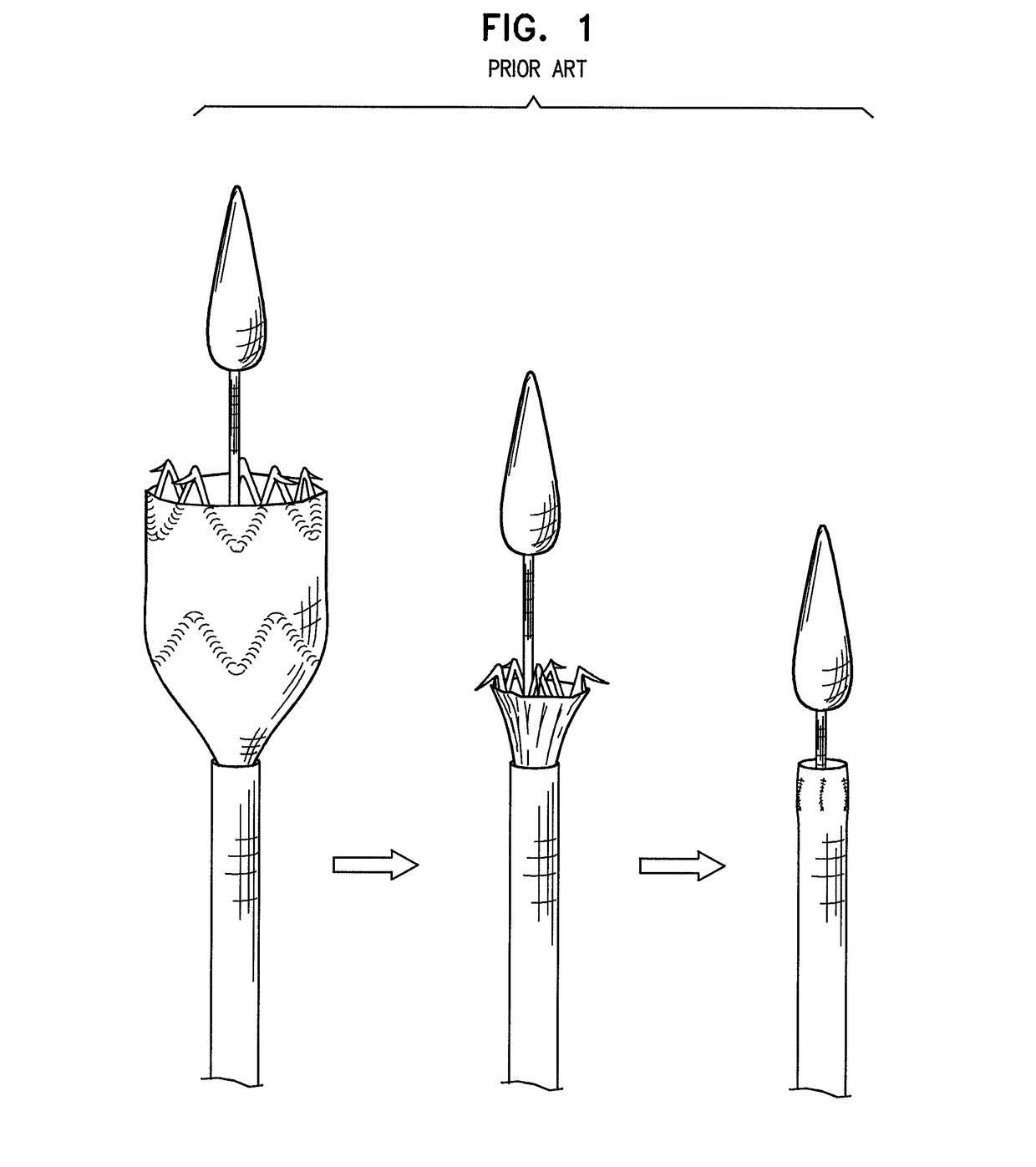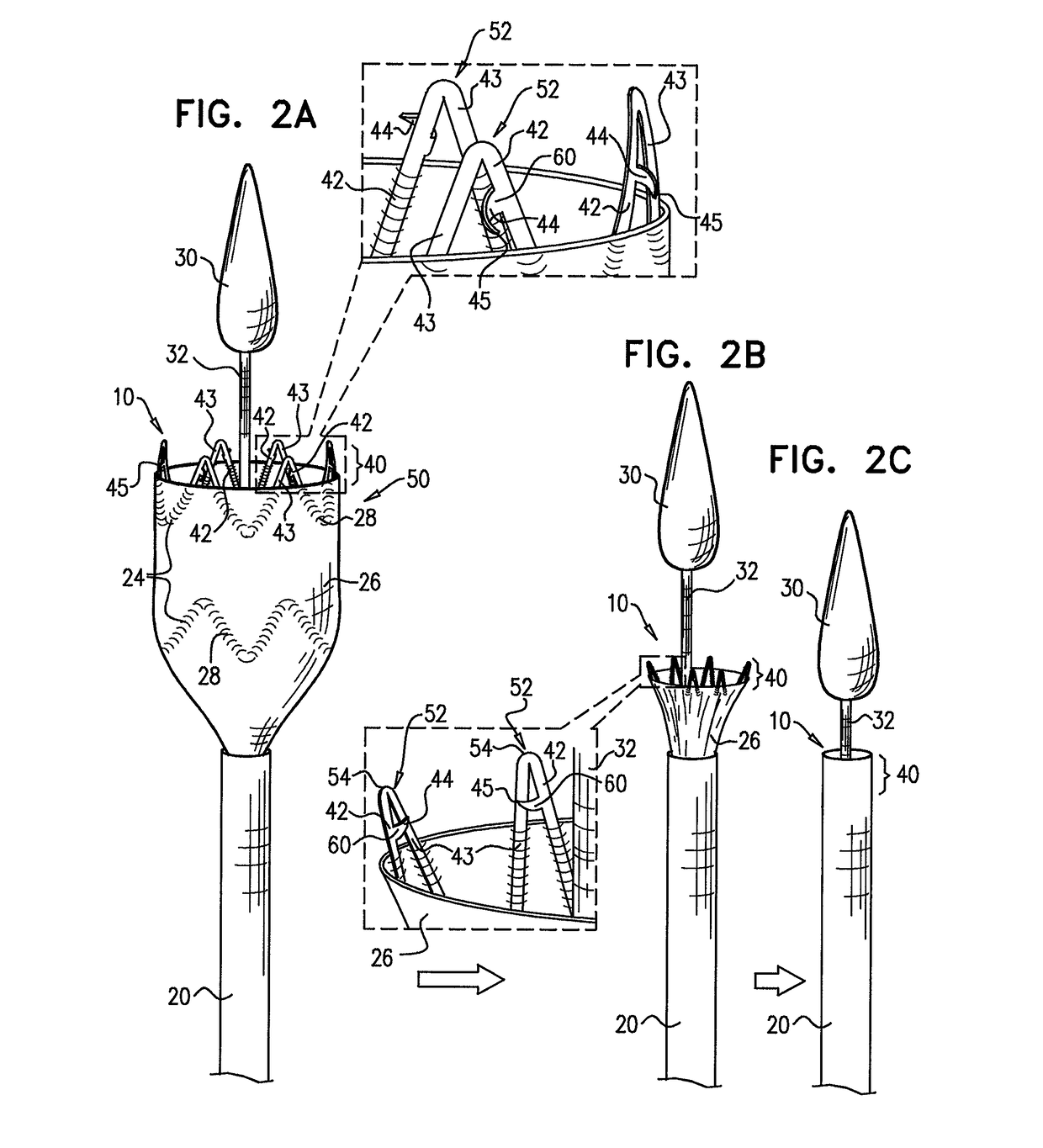Stent-graft with fixation elements that are radially confined for delivery
a technology of fixation elements and stents, applied in the field of tubular prostheses, can solve the problems of damage to the inner wall, penetration, tear or otherwise damage to the external delivery sheath, and the difficulty of reducing the crossing profil
- Summary
- Abstract
- Description
- Claims
- Application Information
AI Technical Summary
Benefits of technology
Problems solved by technology
Method used
Image
Examples
Embodiment Construction
[0104]Reference is made to FIGS. 2A-C and 3A-C. FIGS. 2A-C are schematic illustrations of an endovascular stent-graft 10 during several stages of loading the stent-graft into an external delivery sheath 20 of a delivery catheter of a delivery system, in accordance with an application of the present invention. FIGS. 3A-C are schematic illustrations of stent-graft 10 during several stages of deployment of the stent-graft from external delivery sheath 20, in accordance with an application of the present invention.
[0105]Stent-graft 10 comprises a flexible stent member 24 and a tubular fluid flow guide 26. Stent-graft 10 is configured to assume (a) a radially-compressed delivery state, typically when the body is positioned in sheath 20, such as shown in FIGS. 2C and 3A, and (b) a radially-expanded deployment state, when not positioned in the sheath. FIGS. 2A and 3C show a distal portion of the body in the radially-expanded state. FIGS. 2B and 3B show a distal portion of the body partiall...
PUM
 Login to view more
Login to view more Abstract
Description
Claims
Application Information
 Login to view more
Login to view more - R&D Engineer
- R&D Manager
- IP Professional
- Industry Leading Data Capabilities
- Powerful AI technology
- Patent DNA Extraction
Browse by: Latest US Patents, China's latest patents, Technical Efficacy Thesaurus, Application Domain, Technology Topic.
© 2024 PatSnap. All rights reserved.Legal|Privacy policy|Modern Slavery Act Transparency Statement|Sitemap



